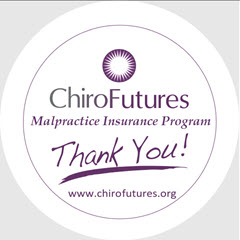Negative Brand Equity

Rest assured George Bush did get at least one thing right and that was his knowledge that Americans want their drugs. Just like the drug pusher, Bush and Pharma know what we want, they deliver it and we buy it.
According to the latest statistics published in Health Affairs, U.S. health care spending increased 6.7 percent to $2.1 trillion, or $7,026 per person in 2006. This raises the health care portion of our gross domestic product to 16.0 percent. According to the report prescription drug spending growth accelerated in 2006 to 8.5 percent.
Focus on GDP for a second. GDP is one of the ways of measuring the size of the economy. The GDP of a country is defined as the total market value of all final goods and services produced within a country in a given year. The percentage we spend on health care is equal to the entire economy of China.
If you listen to the Republicans vying for the presidency you would be led to believe that we have the finest health care system in the world – that the problem is not quality of care but inflation. Can you imagine how stupid they must think we are? If you listen to the Democrats looking to get into the Oval Office the problem is access. Their solution is that you and I should pay to get everyone covered. Ron Paul of course thinks the government should stay out of health care (along with everything else) and let the market take care of it. And he’s considered the nut in the bunch?
While health care in the United States is generally touted as being superior to anywhere else, the reality is much more harsh and it’s the same old sad story that no one wants to listen to. According to the WHO, in terms of life expectancy, the United States lags far behind most other comparable nations. The US ranks 28th in infant mortality among 39 industrialized nations. Compared with 30 other countries, the United States has the highest incidence of all cancers compared with 30 other countries and the United States ranks 37thaccording to WHO’s assessment of health care systems throughout the world.
Making matters worse are the ongoing reports of error in medicine. According to the Institute of Medicine these errors account for at least 100,000 deaths per year. Others such as Null et al have been more critical asserting that:
“The number of unnecessary medical and surgical procedures performed annually is 7.5 million. The number of people exposed to unnecessary hospitalization annually is 8.9 million. The total number of iatrogenic [induced inadvertently by a physician or surgeon or by medical treatment or diagnostic procedures] deaths is 783,936 annually.”
In his groundbreaking paper, Lucian Leape of Harvard estimated that in the United States 180,000 people die each year as a result of iatrogenic injury. Leape compared these deaths to the equivalent of three jumbo-jet crashes every two days.
According to David Eddy: “The problem is that we don't know what we are doing.” Eddy maintains that even with a high-tech health-care system that costs us $2 trillion a year, there is little or no evidence that many widely used treatments and procedures actually work better than various cheaper alternatives. According to Eddy only 15% of what doctors do is backed by scientific evidence.
According to Public Citizen, medical malpractice kills approximately 80,000 people per year. Public Citizen stated that if this number is correct than medical malpractice is the 3rd leading cause of preventable death in the United States just behind cigarettes and alcohol.
It’s at about this time in the presentation that all the chiropractors start jumping up and down and waving fists. Not so fast. While allopathic medicine has a dismal record and we could go up against them any day if body counts were the metric - one should keep in mind how we know all of the above statistics – they track them. And then they make them public. If you’ve been paying attention to the medical literature they know they have a problem.
The issue is that while we also know they have a problem we have little to no evidence that we are any better. Our profession spent its infancy battling to establish itself, then we struggled to stay out of jail and gain licensure, then came the battle for insurance equality which was quickly followed by the Mercedes 80’s. Sure, bring the whole family in 3 times a week for 6 months – you’ve got the Blues! Got no insurance – no worries I’ll treat you and the family for $10 a visit and make it up from PI, Work Comp and those who have the Blues. After all I’m a selfless server.
While our leadership got drunk off the 80’s insurance trough no one noticed that the age of accountability in health care was already under way. And while we were getting stung badly during the managed care era - leadership was too busy trying to figure out how to relive the 80’s than figure out how to plan for the future – which is where we find ourselves right now.
Dazed, confused and hung over - we sit and wonder why our market share has dipped from 7% to 5%. We wonder why chiropractic college enrollments are down 40%. We wonder how the chiropractic managed care groups took control and are now really the ones who are directing the future of our profession. They must sit and laugh as the ACA and ICA bicker over whether or not they should merge – as if that is going to stop the downward spiral or loosen the MCO’s grip on power.
We wonder: why, in the face of increasing utilization of complementary and alternative care and the prospect of an impending $1 trillion wellness industry, isn’t the public beating a path to our door?
The answer is: Negative Brand Equity.
Most people are not neutral when it comes to chiropractic – they already have an opinion – and it ain’t a good one. According to Gallup, we rank just a couple notches above used car salesmen when it comes to the public’s perception of our level of honesty and integrity. And even when a particular John Q. Public does have a favorable view of us – chances are it’s for fixin’ bad backs.
So I wonder…
What will the leadership of the profession do now that the future is here - a future dependent on outcomes. Who can help a patient get better faster and cheaper while providing high quality care that the patient is satisfied with? Who has solutions for the new public health issues that are now taking the place of those from the early part of the century? Who has solutions for the chronic debilitating diseases that nearly 100 million people are going to be showing up at the doctor for? Who has solutions for these nearly 100% lifestyle and functionally based diseases?
Oh, I see you jumpin’ up and down shouting: “we do, we do!” Not so fast Lash LaRue. Stop your spurs from jingling and jangling for a second. Maybe, just maybe, we should stop and be thoughtful about how we try and catch up with the future. God knows our previous approaches haven’t worked.
First, I suggest we admit to ourselves that ¾ of the chiropractic lifestyle doesn’t belong solely to us. You can get diet, exercise, and positive mental attitude training from the personal trainer at your local gym. Paul Zane Pilsner points out that much of the $1 trillion in wellness services that will be provided will be provided by individual entrepreneurs – most of whom will not be health care providers.
Secondly, I don’t know any other provider that is offering the final quarter of the chiropractic lifestyle – analysis and correction of vertebral subluxation.
So, am I saying we should drop everything and everyone should become a straight chiropractor – no. Although, I don’t see that as a bad thing. What I am saying is that whichever of the two we choose – we better have proof that our outcomes matter. Because no matter what happens in health care it is guaranteed that the future is strict accountability - regardless of the payor. One thing that everyone agrees on is that health care cannot continue to consume 16% of the gross domestic product – we are headed for a meltdown and no one denies this. If you can see beyond the short term plans to put band aids on it so somebody can get elected you’ll see that the only real long term solution being discussed is looking at and paying based on outcomes.
So, if chiropractors can show that when it comes to the chronic, debilitating lifestyle diseases that make up the epidemics of our time that we improve outcomes more effectively, cheaper, and with greater patient satisfaction – then we have a viable future. If we don’t demonstrate this I can guarantee that someone else will.
This means that the profession has to vigorously shake off its cultural aversion to research. The days are over when the profession can rely on 70 poorly compensated researchers and a handful of research journals that no one subscribes to. The colleges are going to have to face the reality that their own future depends on producing the evidence of chiropractic’s effectiveness otherwise there won’t be any butts in their seats. Why get $200,000.00 in debt when you can do wellness on less or in a profession without negative brand equity?
And finally, our practitioners are going to have to undergo some personality changes and work on not being so isolated. You are going to have to lift up your head from the adjusting table, get involved and force these needed changes. Because the entrenched powers in the profession are not going to do it otherwise. If you take away all the student members of the national chiropractic associations we’ve got maybe 15,000 dues paying members combined. That should be a sign to every organization that the average practitioner does not see your value as an organization. Accept that and figure out how to better serve the practicing chiropractor.
As always I look forward to your feedback, comments and questions.
Dr. Matthew McCoy
Editor
References
Aaron Catlin, Cathy Cowan, Micah Hartman, Stephen Heffler, and the National Health Expenditure Accounts Team. National Health Spending In
2006: A Year Of Change For Prescription Drugs. HEALTH A F FA I R S. Vo l u m e 2 7, No.1
Marwick C. US public health system needs major overhaul. BMJ 2002;325:1132 16 Novemberhttp://bmj.bmjjournals.com/cgi/content/abridged/325/7373/1132/c?ck=nck.
To Err Is Human: Building a Safer Health System. Institute of Medicine 2000 http://www.nap.edu/books/0309068371/html/
Null G, Dean C, Feldman M, Rasio D, Smith D. The American Medical System Is The Leading Cause Of Death And Injury In The United States.http://www.ourcivilisation.com/medicine/usamed.htm
Leape LL. Error in medicine. JAMA. 1994 Dec 21;272(23):1851-7.
Eddy D. Where is the Wisdom BMJ 1991 303:798
Public Citizen, May/June issue 1994
Blogs
- The Chiropractic Cartel: A Look Back at Bias in Accreditation and its Imact on Today's Profession
- Inside Montana's Chiropractic Monopoly: ACA & MCA's Brazen Board Takeover
- Concerns Grow About Control of the NY State Chiropractic Board by the ACA - Use of X-ray in NY Under Threat
- Reproductive Health Information and Chiropractic Care: Navigating New Privacy Regulations
- Navigating Substance Use Disorder (SUD) Consent: What Chiropractors Need to Know













